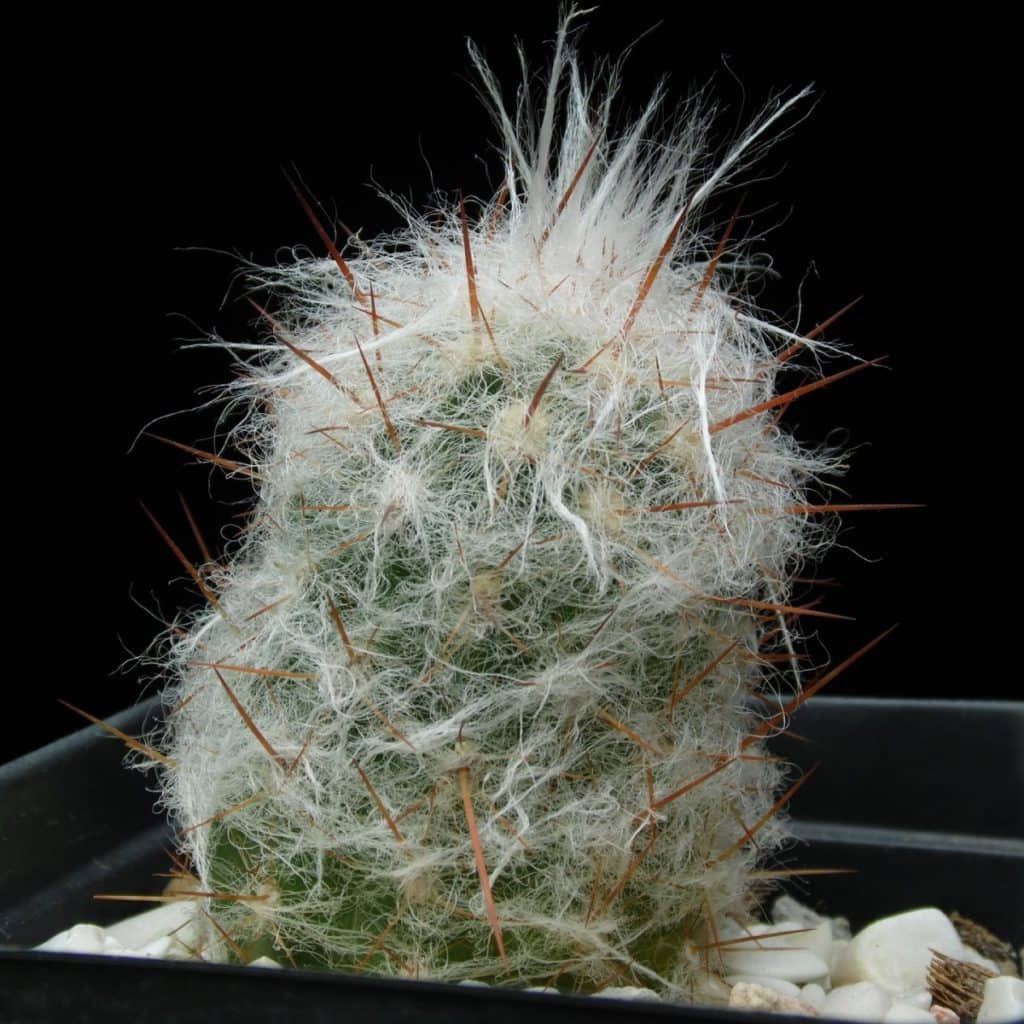Oreocereus trollii: Characteristics and Care
Imagine a cactus that looks like it’s covered in fuzzy white hair, with eerie reddish-brown spines poking through. The otherworldly Oreocereus trollii might just give you nightmares – or inspire you to add this peculiar plant to your succulent collection. Keep reading to uncover the strange secrets of the “Old Man of the Andes.”

Contents
About Oreocereus trollii
Native to the arid, high altitude mountains of Bolivia and Argentina, the Oreocereus trollii belongs to the Cactaceae family. Its common name is a nod to the wooly white hairs that cover its ribbed, dark green columnar stems, giving it an aged, wizened appearance like an “Old Man.”
The hairs protect the slow-growing cactus from intense sun in summer and frost in winter. It can take up to 20 years for this hardy plant to reach just 2 feet tall! But once it does, it produces funnel-shaped purplish-red or pale pink flowers in late spring.
The Oreocereus trollii’s bizarre looks make it an eye-catching addition to rockeries and outdoor cactus gardens. Here’s how to care for this curious botanical relic.
How to Care for Oreocereus trollii
Light Requirements
The Old Man of the Andes thrives in bright, sunny conditions all day long. It does best with full to partial sun exposure and good air flow, preferring to be grown outdoors rather than inside.
For an outdoor garden, pick a spot that gets plenty of sunlight. If growing in a container indoors, place it in front of a south-facing window. You can also use a grow light to supplement natural light if needed.

Watering Needs
In summer’s vegetative period, the Oreocereus trollii needs frequent watering – water thoroughly but allow the soil surface to fully dry before watering again.
In fall and winter, let it stay drier, only watering occasionally to prevent shriveling. Avoid watering on humid, overcast days or when temperatures dip below freezing.
Over-watering, especially in humid winter conditions, can cause this cactus to rot.
Soil Preference
For best growth, the Old Man needs fast-draining, acidic soil with a pH between 5.0-6.5. A mix of 1/3 grit or equal parts leaf mulch and coarse sand works well.
Fertilizing
Feed your Oreocereus trollii every 1-2 weeks in spring and summer with a balanced liquid fertilizer or proprietary cactus food.
Temperature and Climate
Hailing from arid mountains, this is primarily an outdoor cactus that thrives in warm climates. It grows best in USDA zones 7a-11b with temperatures around 68°F.
In colder areas, grow it indoors as long as it receives ample sunlight and stays dry. Avoid exposing it to temps below 20°F, even if the space is sheltered.
For cold, wet winters, keep it in a sunny greenhouse to protect it from excess moisture – the Old Man is very prone to rot in high humidity periods.

Pest and Disease Resistance
Generally a hardy, disease-resistant plant, the Oreocereus trollii may occasionally encounter mealybugs or spider mites.
Pruning
No pruning is required for this cactus.
Potting and Repotting
Repot the Oreocereus trollii when you first get it, providing fresh, well-draining cactus soil. Repot every 1-2 years in spring as roots outgrow their container. Let it dry out 1-2 weeks after repotting before watering again.
How to Propagate Oreocereus trollii
The slow-growing Old Man isn’t the easiest to propagate from seed, so taking cuttings is recommended. Here’s how:
- First, take 4-6 inch cuttings from a mature plant in spring, allowing the cut ends to callus over for a few weeks.
- Fill a pot with half potting mix and half pumice or perlite for fast drainage.
- Prepare holes for inserting the calloused cuttings upright.
- Place the pot in a warm spot with bright, indirect light and very little water until roots form.
- Once rooted, transition to regular Oreocereus trollii care.
With its shaggy, twisted appearance unlike any other succulent, the Oreocereus trollii cactus is an eccentric yet hardy specimen you’ll never forget!
